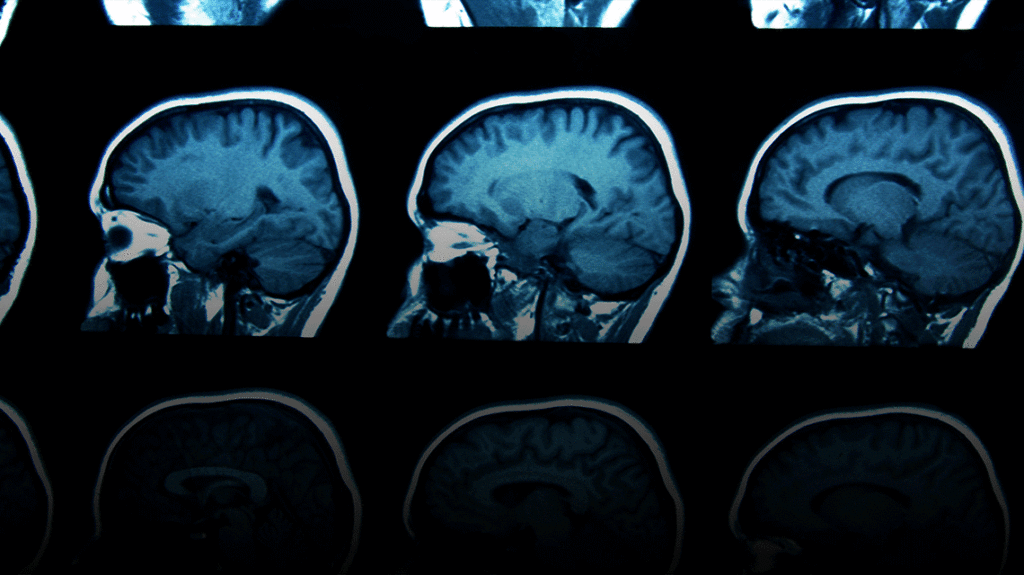Novel Immunotherapy Approach Enhances Immune Surveillance in Gliomas
Novel Immunotherapy Approach Enhances Immune Surveillance in Gliomas https://pediatricsnationwide.org/wp-content/uploads/2021/01/AdobeStock_82959563_brain-imaging-for-web-1024x575.gif 1024 575 Lauren Dembeck Lauren Dembeck https://pediatricsnationwide.org/wp-content/uploads/2021/03/Dembeck_headshot.gif- March 29, 2024
- Lauren Dembeck

Genetically engineered myeloid cells release interleukin-2, which helps the immune system overcome the immunosuppressive tumor microenvironment in gliomas.
Gliomas — tumors originating from the neuronal support (glial) cells of the central nervous system — are one of the leading causes of cancer-related death in adolescents and young adults. Approximately two-thirds of gliomas in these patients are indolent, low-grade tumors. These tumors typically respond favorably to the standard of care treatment, consisting of total resection followed by chemo-radiotherapy, but these approaches are associated with morbidity and numerous side effects for patients. However, many patients experience relapse, and their tumors progress to aggressive, rapidly growing and highly invasive, high-grade gliomas, which are associated with a significantly reduced survival of 1 to 3 years post relapse and are uniformly fatal.
Researchers at Nationwide Children’s Hospital are working to characterize the tumor biology and heterogeneity of gliomas, including the molecular processes underlying tumor relapse and transformation from low-grade to high-grade disease.
“We are working to develop strategies to prevent malignant progression of low-grade gliomas to high-grade gliomas,” says Prajwal Rajappa, MD, MS, physician-scientist and principal investigator for the Institute for Genomic Medicine at Nationwide Children’s. “As progression occurs, we observed an increase of immunosuppressive infiltrating myeloid cells recruited to the tumor microenvironment and a paucity of cytotoxic effector cells, T cells and NK cells — leading to impaired immune surveillance and cancer cell survival.”
Dr. Rajappa believes this evolution in the composition of the tumor microenvironment is, at least partially, why immunotherapy, which has been a major advancement for the treatment of several tumor types in the last decade, has shown limited efficacy in gliomas.
In a recent study published in Cell Reports, Dr. Rajappa and colleagues report the first successful use of a novel cell-mediated immunotherapy in a pre-clinical model of low-grade to high-grade glioma progression. A single intravenous dose of genetically engineered bone marrow-derived myeloid cells that release the pro-inflammatory interleukin-2 protein (GEMys-IL2s) was sufficient to delay malignant progression of glioma and significantly improve overall survival in mice with low-grade glioma.
“In some ways our experimental design is similar to a Trojan-horse approach,” adds Dr. Rajappa. “We are leveraging a growing consensus and data in the field that gliomas recruit bone marrow-derived myeloid cells to the local tumor microenvironment.”
The Rajappa Laboratory had three primary questions: Would the GEMys-IL2s be recruited to the glioma tumor microenvironment? If so, will the released IL2, which is typically secreted by activated T lymphocytes and is one of the primary activators of naive T cells, lead to recruitment of cytotoxic effector T and NK cells and reprogram the tumor microenvironment? Will the treated animals have delayed tumor progression and demonstrate increased overall survival?
To address these questions, the researchers used a combination of cell tracking and multi-omics approaches, allowing them to examine changes in cell populations as well as those in gene and protein expression.
By following a green fluorescent protein expressed within engineered cells, the team demonstrated that the intravenously injected GEMys-IL2s were able to cross the blood-brain barrier and home to the tumor microenvironment.
They found mice treated with GEMys-IL2s had a 10-fold increase of IL2 gene expression in the tumor microenvironment compared with that of mice administered with only the carrier solution that contained no GEMys-IL2s. This finding was confirmed in protein expression analyses.
The team further demonstrated that increased IL2 expression was associated with enhanced trafficking and activation of cytotoxic T and NK cells within the tumor microenvironment. They also observed upregulation of other pro-inflammatory cytokines for T, NK, and myeloid cell activation and downregulation of various markers of immunosuppression.
Of note, one dose of GEMys-IL2s treatment delayed malignant progression in preclinical models, reflected by significantly reduced tumor burden 7 days after treatment, and significantly extended survival in treated mice compared with those administered with only the carrier solution that contained no GEMys-IL2s.
“This type of technology allows us to reprogram the tumor microenvironment in a personalized fashion, using myeloid cells as potential therapeutic agents to deliver and reconstitute deficient pro-inflammatory factors before and during tumor evolution,” says Dr. Rajappa, who is also an assistant professor of Pediatrics and Neurological Surgery and member of the Translational Therapeutics Research Program at The James Comprehensive Cancer Center of The Ohio State University College of Medicine. “Our next goal is to translate the work being done in my lab to the bedside, with additional preclinical studies followed by a next-generation immunotherapy clinical trial for our patients.”
Reference
Canella A, Nazzaro M, Rajendran S, Schmitt C, Haffey A, Nigita G, Thomas D, Lyberger JM, Behbehani GK, Amankulor NM, Mardis ER, Cripe TP, Rajappa P. Genetically modified IL2 bone-marrow-derived myeloid cells reprogram the glioma immunosuppressive tumor microenvironment. Cell Rep. 2023 Aug 29;42(8):112891. doi: 10.1016/j.celrep.2023.112891. Epub 2023 Jul 28. PMID: 37516967.
About the author
Lauren Dembeck, PhD, is a freelance science and medical writer based in New York City. She completed her BS in biology and BA in foreign languages at West Virginia University. Dr. Dembeck studied the genetic basis of natural variation in complex traits for her doctorate in genetics at North Carolina State University. She then conducted postdoctoral research on the formation and regulation of neuronal circuits at the Okinawa Institute of Science and Technology in Japan.
-
Lauren Dembeckhttps://pediatricsnationwide.org/author/lauren-dembeck/
-
Lauren Dembeckhttps://pediatricsnationwide.org/author/lauren-dembeck/
-
Lauren Dembeckhttps://pediatricsnationwide.org/author/lauren-dembeck/
-
Lauren Dembeckhttps://pediatricsnationwide.org/author/lauren-dembeck/January 29, 2019







